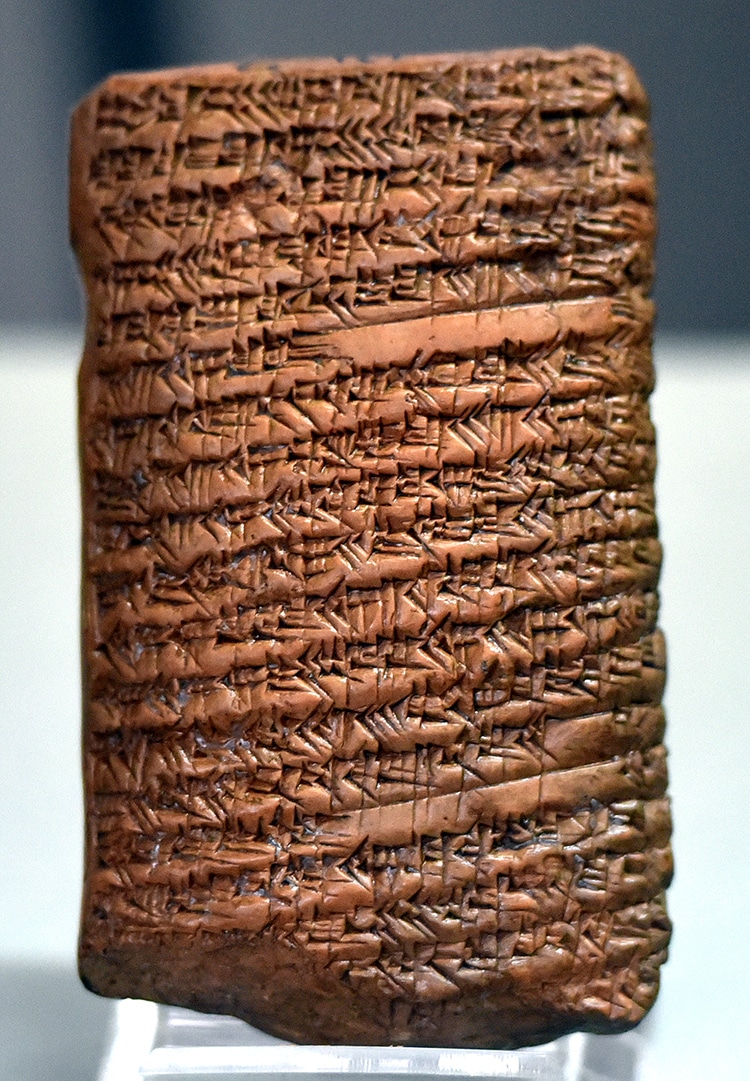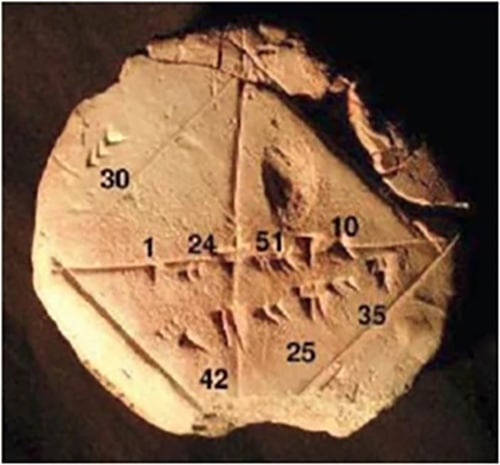The ancient Babylonian tablet in cuneiform describes the pythagorean theorem.
Its tool has been vital to technical endeavors like engineering and design for thousands of years.
Ancient clay tablets suggest that the ancient Babylonians knew of this relationship as early as 2000 BCE.

The ancient Babylonian tablet in cuneiform describes the pythagorean theorem. (Photo: Osama Shukir Muhammed Amin FRCP(Glasg) viaWikimedia Commons,CC BY-SA 4.0 DEED)
The tablet above is a clay tablet discovered in Iraq and covered in cuneiform writing.
It dates to sometime between 2000 and 1500 BCE.
This ancient text is not the only evidence that the Babylonian’s used this equation.

A Babylonian tablet using the Pythagorean Theorem to calculate a problem around 1,900 BCE. It reads: 4 is the length and 5 is the diagonal. What is the breadth? Its size is not known. 4 times 4 is 16. And 5 times 5 is 25. You take 16 from 25 and there remains 9. What times what shall I take in order to get 9? 3 times 3 is 9. 3 is the breadth.(Photo:Fig. 3, Ratner)
Drawings on other tablets depict triangles which look amazingly similar to proofs of the theorem (see below).
It is also true that much of ancient historical studies has been deeply Eurocentric.
A Babylonian tablet using the Pythagorean Theorem to calculate a problem around 1,900 BCE.
It reads: 4 is the length and 5 is the diagonal.
What is the breadth?
Its size is not known.
4 times 4 is 16.
And 5 times 5 is 25.
You take 16 from 25 and there remains 9.
What times what shall I take to get 9?
3 times 3 is 9.
3 is the breadth.(Photo:Fig.
The Mathematician Who Left Behind a Mysterious Last Theorem
Who Was Isaac Newton?
Get to Know the Alchemist, Physicist, and Mathematician